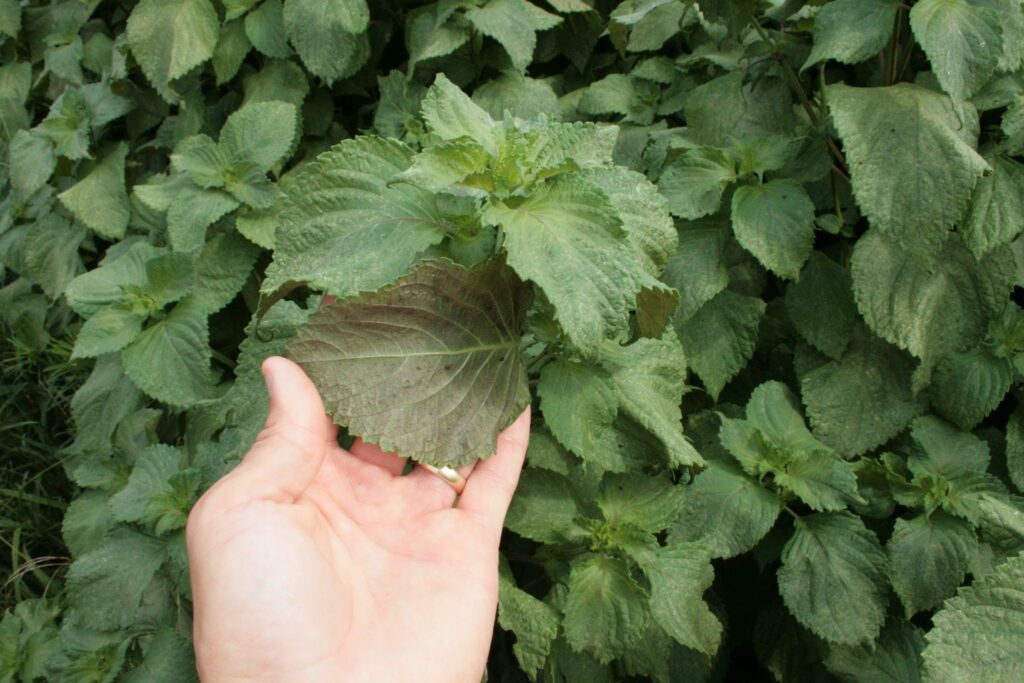Is Perilla Mint Toxic to Livestock
Perilla mint is a type of mint that is related to the peppermint plant. It is an annual plant that is native to East Asia, and it has been used in traditional Chinese medicine for centuries. Perilla mint is also known as Japanese basil, and it is sometimes used as a culinary herb. While it is perfectly safe for humans to consume Perilla Mint, it can be toxic to cattle.
Perilla mint is not considered to be toxic to humans, but it is important to exercise caution when handling the plant. If you are allergic to mint, you may also be allergic to perilla mint. If you experience any symptoms after coming into contact with the plant, such as itching or swelling, seek medical attention immediately.

Perilla Mint is dangerous and is often-fatal depending on the amount consumed by an animal. It can take anywhere from hours to days for them die. The cause of death in these cases? Perilla ketones! These are one few volatile compound found within plants that causes perillyl hepatotoxicity when ingested by cattle or other domestic animals which leads to fluid accumulation inside their lungs.
What does Perilla Mint look like
The plant has leaves that are green and oval-shaped. The leaves are covered in small hairs, and they have a distinct smell of mint. The flowers of the plant are small and purple, and the plant produces small black seeds. Perilla Mint grows best in well shaded areas. If you are scouting it out in your pastureland; look around trees and well wooded areas.
Symptoms of cattle ingesting Perilla Mint
If a cow or other livestock consumes perilla mint, there are several symptoms that may occur. Within 24 hours of ingestion, the animal may experience diarrhea, loss of appetite, and dehydration. In severe cases, liver damage and death may occur.
When this plant is consumed, it can cause fluid to build up in and around the lungs. This usually happens with cattle, but horses are not exempt from these effects. Sheep and goats have also been known to suffer many adverse reactions and death.
They may experience shortness of breath as well. This is because the plant contains a compound called perillaldehyde, which is known to be toxic to livestock. When ingested, perillaldehyde can cause liver damage and death. In some cases, perilla mint toxicity has been linked to outbreaks of hemolytic anemia in sheep and cattle. If you notice any of these symptoms in your livestock, contact your veterinarian immediately.
Treatment for livestock after ingesting Perilla Mint
If you suspect that your livestock has consumed perilla mint, there are several steps you can take to help them.
- First, contact your veterinarian immediately. The vet may provide activated charcoal to help absorb any toxins that the animal has ingested.
- The animal may also be given fluids to help them stay hydrated.
- In severe cases, the vet may need to provide additional treatment, such as oxygen therapy or liver dialysis.
When is the best time to Scout out Perilla Mint
When scouting for perilla mint, it is important to do so before the plant begins to flower. This is because the flowers of the plant are poisonous to livestock, and they can be deadly if ingested. The leaves of the plant are also poisonous, but they are less toxic than the flowers.
If you are able to identify perilla mint before it flowers, you can avoid any potential problems with livestock eating it. However, if the plant has already flowered, it is important to remove it immediately.
How to Dispose of Perilla Mint
If you have a pasture with perilla mint, there are several steps you can take to dispose of it.
- The first step is to mow the plants as close to the ground as possible. This will help to prevent livestock from grazing on it.
- You can also use herbicides to kill the plants but be sure to read the label carefully to make sure that it is safe for use around livestock.
- Finally, you can dig up the plants and bury them in a landfill.
Perilla mint is a beautiful plant that has many benefits for humans. However, it is important to remember that it can be toxic to cattle and other livestock. If you have perilla mint on your property, take care to keep your animals away from it. And, if you suspect that your livestock have ingested perilla mint, contact your veterinarian immediately.






